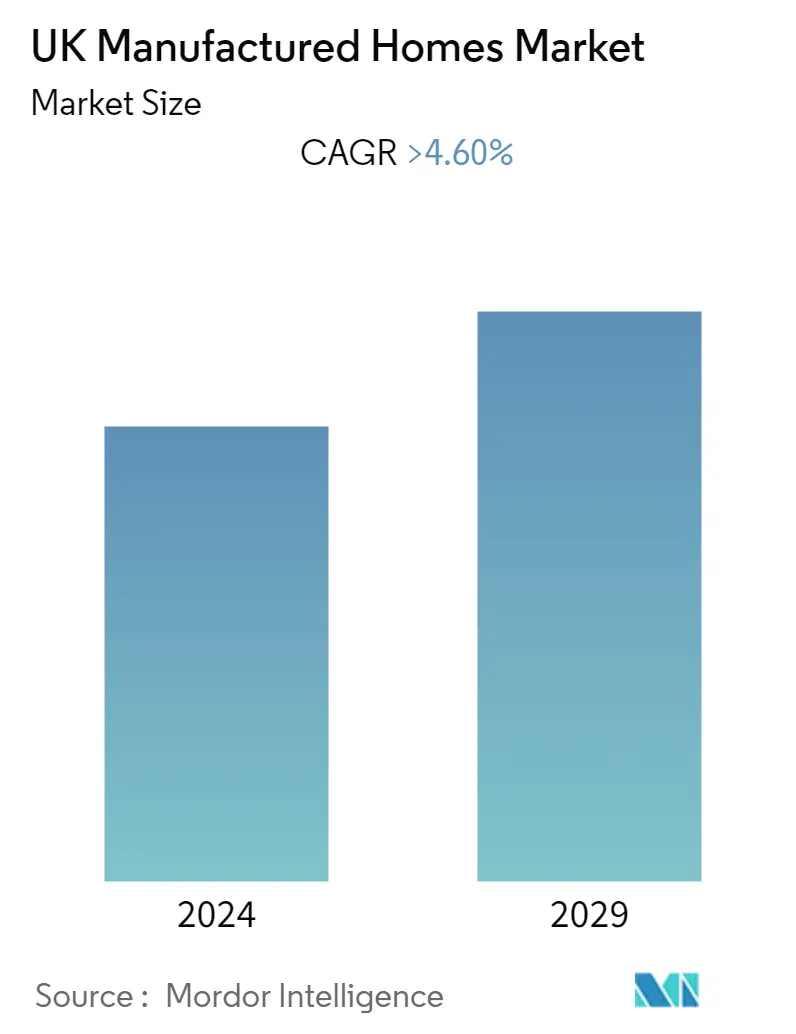Market Size of UK Manufactured Homes Industry

| Study Period | 2020 - 2029 |
| Base Year For Estimation | 2023 |
| Forecast Data Period | 2024 - 2029 |
| Historical Data Period | 2020 - 2022 |
| CAGR | > 4.60 % |
| Market Concentration | Medium |
Major Players
*Disclaimer: Major Players sorted in no particular order |
Need a report that reflects how COVID-19 has impacted this market and its growth?
UK Manufactured Homes Market Analysis
The size of the UK Manufactured Homes Market is USD 4.2 billion in the current year and is anticipated to register a CAGR of over 4.6% during the forecast period
- The COVID-19 epidemic has impacted the economy of the region and interfered with business activities. The government-imposed shutdown has compelled the enterprises to postpone their initiatives. The lockdown restrictions have reduced market participants' ability to generate income. A shortage of laborers is the result of social exclusion and a lockdown that was mandated.
- The market for manufactured and mobile houses is driven by the popularity of affordable housing among people all over the UK. One significant trend that has supported the growth of the market for manufactured houses is the rising popularity of prefabricated homes. Design and construction, body and frame requirements, thermal protection, plumbing, electrical fire safety, and energy efficiency are the main determining factors. Some of the recent technologies that are used in manufactured homes include built-in wireless connectivity, pop-up power strips, keyless entry, and NEST Thermostats.
- According to a recent research, if the government follows through on its promise to build 300,000 homes annually, England will spend all of its 1.5C carbon budget on housing alone. By 2050, the housing system would consume 104% of the nation's total carbon budget if new dwellings were constructed at the same rate as existing ones and present efficiency trends continued. The study suggests that more sustainable solutions to the housing crisis include drastically modifying existing homes, reducing the number of second homes, discouraging people from purchasing homes as financial ventures, and forcing people to live in smaller homes.
- By 2030, the government has promised to adopt legally binding standards that will require all new initiatives to result in a "biodiversity net gain." Building developments for commercial and residential use constitute a hazard to 24% of the world's threatened species listed on the IUCN Red List. According to the researchers, retrofitting existing stock to make all homes zero carbon by 2050 would save 38% of the total carbon budgets needed to limit global warming to 1.5 degrees Celsius. They also note that this is "by far the most effective policy for reducing housing's conflict with climate targets." Although though the report did not examine how many homes the government should be constructing, it is theoretically conceivable to meet housing demands without a rapid expansion of the housing stock. According to the researchers' estimates based on data from the English Housing Survey, there are 1.2 million empty or underused homes.
